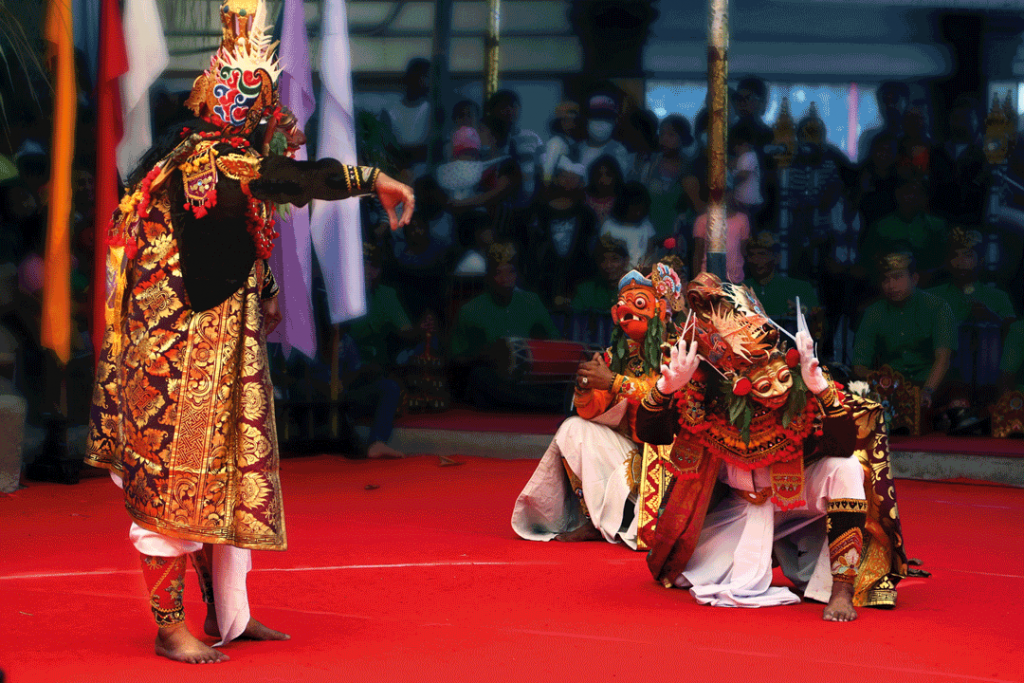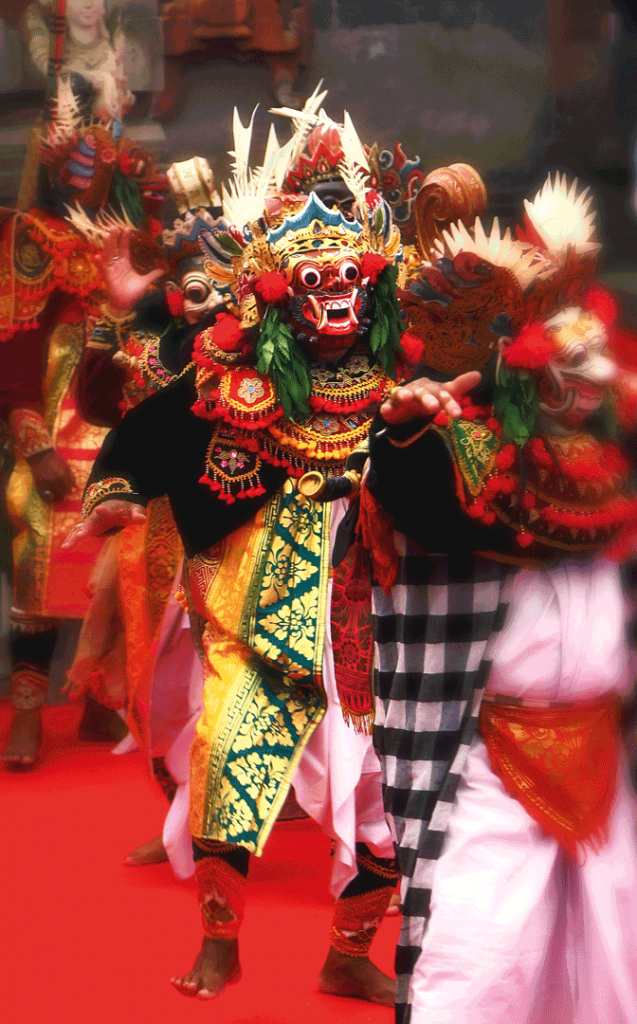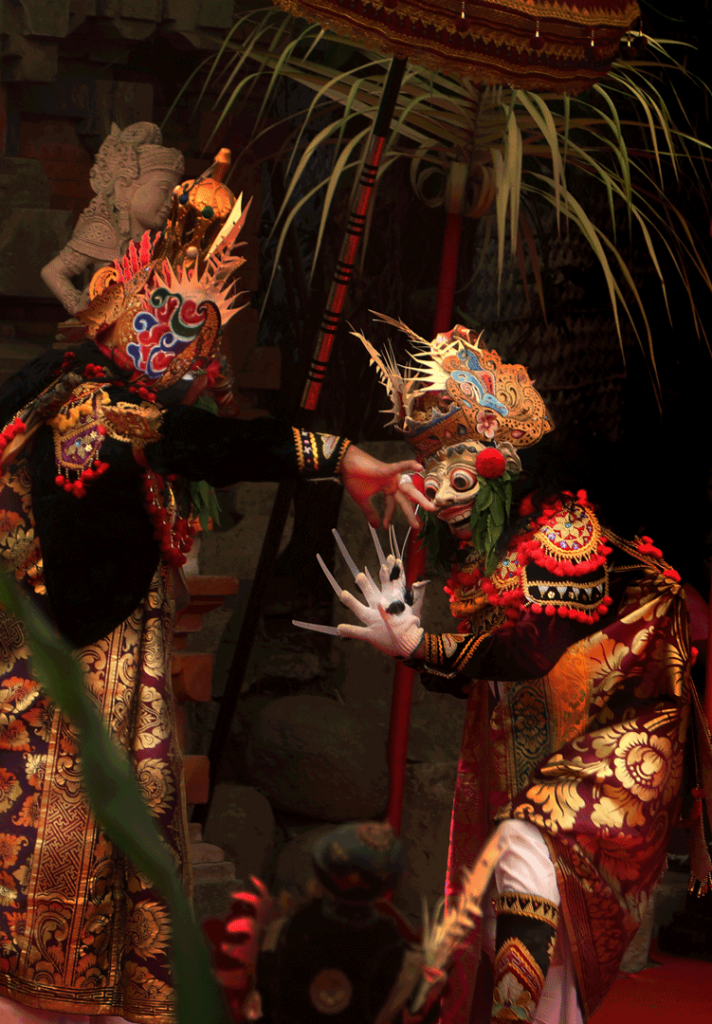In Bali, tradition is cherished by the local community. Music, dance, carving, painting – all were once considered ways of paying homage to God, to the spirits of ancestors and to Mother Nature. These activities now considered ‘art’ were once holy acts, locally known as ngayah.

In the year 1478AD, the fall of the Majapahit Empire saw a great migration of its population to Bali. This was only natural as a Hindu-majority empire. Through this migration much of the ancient Javanese culture was brought to Bali, explaining similarities in today’s Javanese and Balinese traditions. One of these ‘cultural imports’ was Wayang Wong.
Wayang, meaning shadow in the ancient Javanese language of Kawi, is also used to refer to a puppet theatre performance. Whilst the word wong means human. Thus together they refer to the human puppet performance, Wayang Wong.
Puppet theatre performances are specific in nature; usually depicting stories of the Indian Ramayana or Mahabharata epics, each show will have imbued within it some sort of moral for the audience to absorb and learn. Puppet shows were thus once the ‘community classrooms’, where people young and old would learn between right and wrong, good and evil.
In a Wayang Wong performance, there are no puppets. People themselves take on the roles originally assigned to specific puppet characters, acting out the stories usually flashing as shadows in a wayang kulit, or shadow puppet performance.

Bali Arts Festival 2019
These performances bring a lot to the stage, with elaborate costumes, decoration and the lively gamelan orchestra breathing life into the stories told. The atmosphere set by each show romanticise the past and the historic heroes of Hindu tales.
There are two types of Wayang Wong found in Bali, Wayang Wong Parwa and Wayang Wong Ramayana. The Ramayana tells the adventures of King Rama and his journey to Alengka to save his queen, Sita. Rama wins back his beloved by fighting a fierce battle, with the help from Hanuman the white monkey and Jatayu the mighty eagle,
In this theatre-styled performance, the performers must be multi-talented. Along with learning the dance routines of their specific character, they must also learn certain dialogue and sing songs. The dialogue of the main characters are all in the Kawi language, whilst the supporting characters mainly speak in the local Balinese language.
There are different forms of the dance-meets-theatre performance. In the Wayang Wong Ramayana all of the characters will wear a specific mask, whilst in the Wayang Wong Parwa only the characters playing a ‘punakawan’ (or male clown) will wear a mask.

In Tejakula, a district in the Buleleng regency, dozens of sacred Wayang Wong masks form the 16th century are kept in the Pemaksan Temple. KetutSuarnaDwipa, one of the leaders of Wayang Wong GunaMurtiTejakula, says the performance is a sacred heritage. A sacred Wayang Wong is usually performed on the particular day of the calendar. Pak Ketut explains that commercial performances of the Wayang Wong use duplicate masks, not the original masks worn for the sacred performance.
Those performing in a sacred Wayang Wong are chosen based on their lineage. It is said that a long time ago the ancestors of this area made a pact to serve the temple and the holy spirits through dance.
The Wayang Wong of Tejakula is a UNESCO Recognised Intangible Cultural Heritage.









